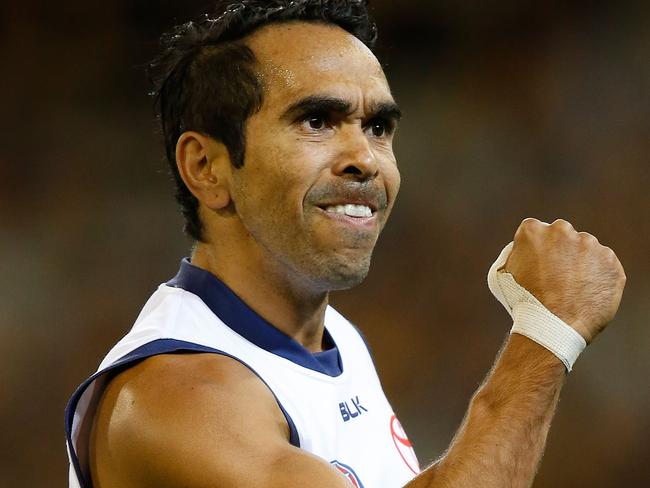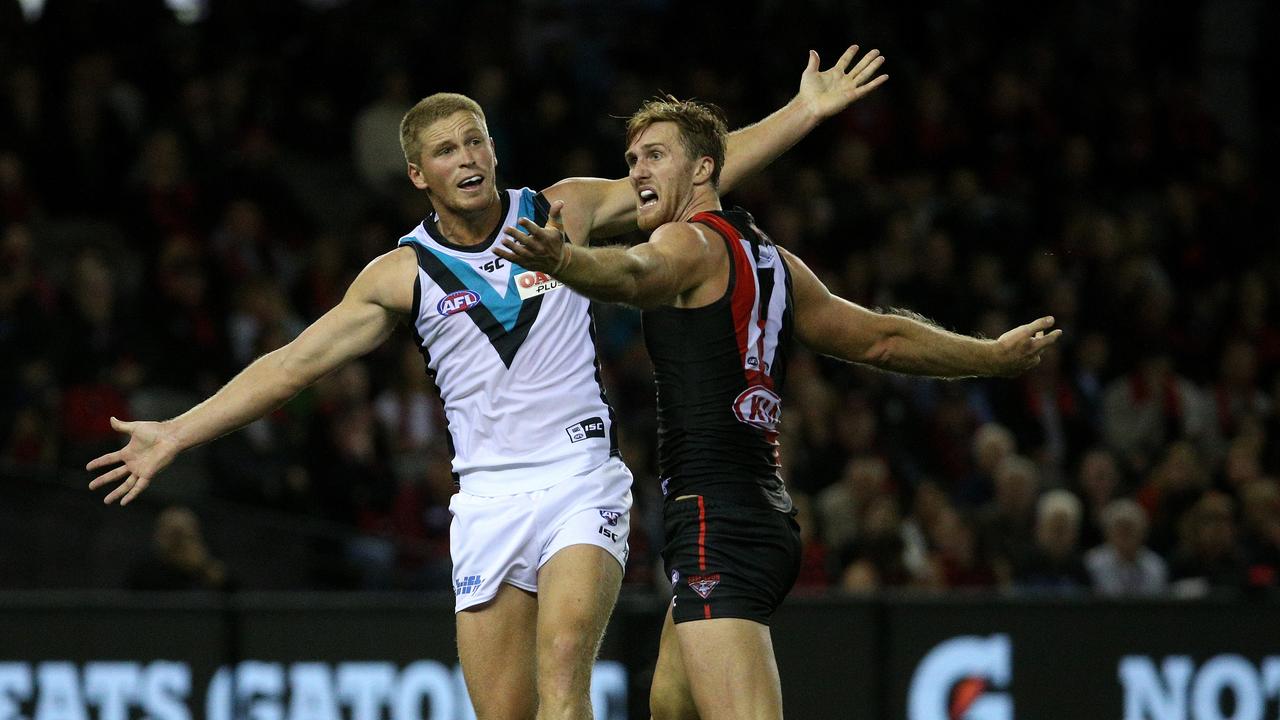Rolling maul on way out as footy is fun to watch again
SCORING is up and boundary throw-ins are down. Where does your club rate in the AFL’s key indicators of attractive footy?

Footy Form
Don't miss out on the headlines from Footy Form. Followed categories will be added to My News.
THE AFL’s key indicators of attractive footy have soared after five rounds, the scoring slump has been arrested and there has been a jump in the time the Sherrin is in play.
North Melbourne is leading the scoring charge, but overall the average is up more than a goal a side.
After a gradual 20-year decline in scoring, the average score per side is up to 93.1 points from last year’s 86.6 points.
Stoppages are down nearly a dozen a game, throw-ins are down to an average of 34.6 (from 42.2) and contested marks are up on last year.
Kevin Norton, a professor of exercise science at the University of South Australia, has studied the style of AFL games for 15 years, measuring the rolling mauls that blighted the game.
Norton says his research shows the time the ball is in play is up from 53 to 58 per cent and ball speed is also up nearly 5 per cent.
With the tightening of deliberate out-of-bounds rules and interpretations of prior opportunity in a tackle, free kicks are up more than two a game given the
The result is that clubs have kicked 100 or more points in a game 36 times this season, up from 28 at the same time last year.
“I think it’s fantastic to watch,’’ Norton said.
“Goals scored has been on a down slope for 20 years and we have turned a corner. Scoring is amazingly high.

“Overall it’s a much better game to watch. Density is lower and scoring is higher.
“Time in play has gone up about 5 per cent and that’s a lot. Once it was as high as 70 per cent but people like seeing action.
“It goes from one end to another and you can come from five goals down now and get equal again.
“I think overall most people would be happy to watch this year’s game compared to last year.”
The interchange cap of 90 has helped break the game open, although Norton believes it will eventually need to be further reduced.
“The game will not self-select the players suited to it,’’ he said.
“The players are feeling the rotations. I have spoken to the players at Adelaide and Port Adelaide. They notice the difference, but they will adapt with two or three pre-seasons.
“Not this year, but in three or four years you would need to drop the interchange further and eventually it will end up at 50 or 60.”





